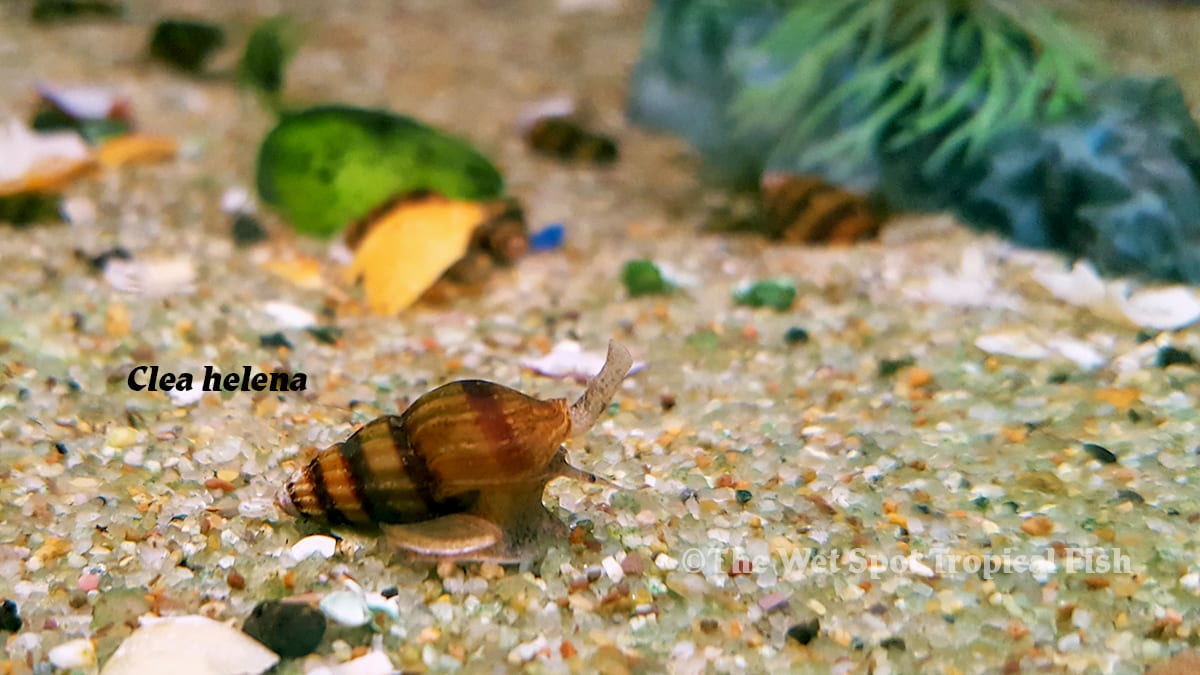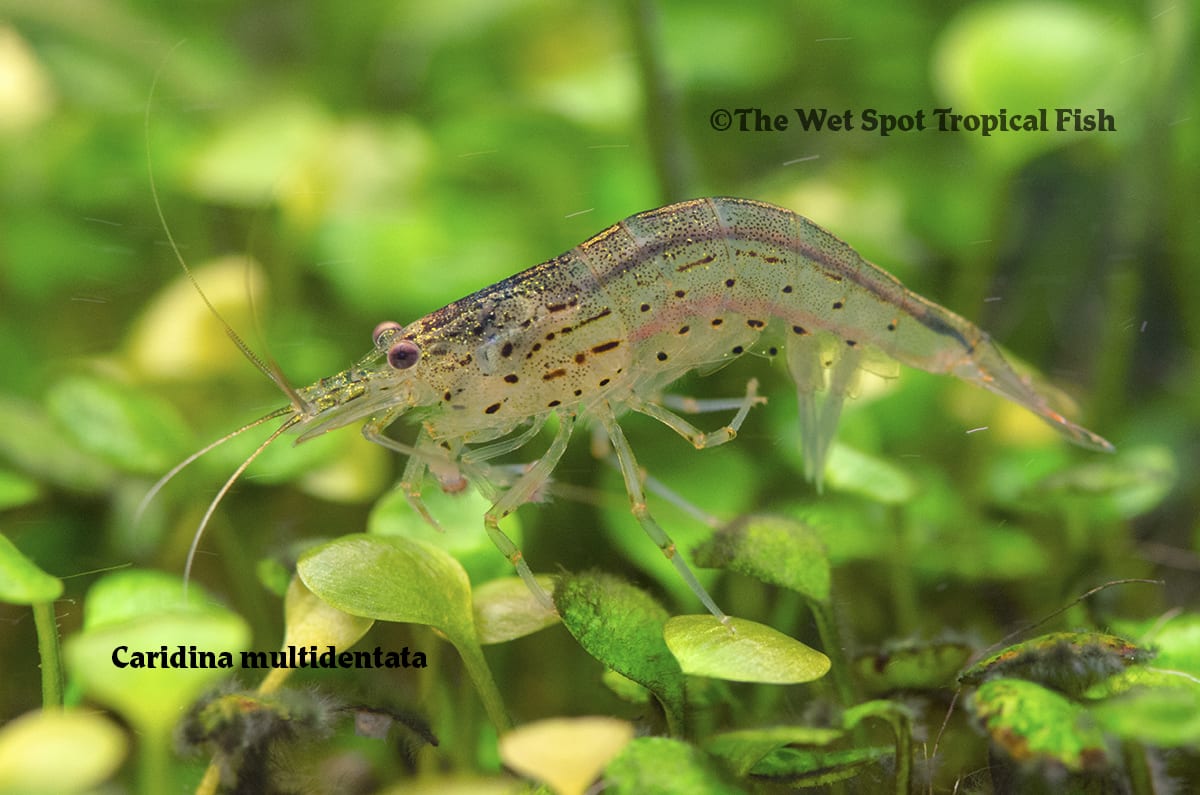Embrace Diversity
Embrace Diversity
Aquarists are well familiar with the fact that tanks and their care extend far past the fish who’ve made a home. These self-contained habitats are ecosystems in and of themselves that require balance. Often, tank nuisances like algae or pond snails can be managed by adding letting nature work itself out. All you have to do is add and care for these new biocontrol agents. Additionally, tank diversity is exciting! Imagine peeking into your underwater window to find frogs gliding to the surface, half exposed and ornate snail shells in the sand, and shrimp darting from hiding place to hiding place. Here, at The Wet Spot, some of our favorite non-pescid freshwater dwellers include Hymenochirus boettgeri, Clea helena, and Caridina multidentata.
Scientific NameHymenochirus boettgeri
Common NameAfrican Dwarf Frog
Temperature / pH77°F / 7.0 to 8.0 pH
Native LocationWest/Central Africa
Preferred DietCarnivorous
Representing amphibians this lesson, is the charismatic H. boettgeri. More commonly known as African Dwarf Frogs, these old-world freshwater-dwellers are characterized by their small size, reaching only 2 inches in length, spotted bodies, and by having webbed toes on both their front and back legs. This frog species spends most of its time submerged, infrequently surfacing to gulp air. This, however, does not mean they will not use their powerful hind quarters for jumping out of tanks without tight fitting lids. These amphibians are very sensitive to drying out, and cannot survive outside of the water for more than 10 to 15 minutes. Though they are not commonly heat-baskers, it is a good idea to have strong light, and projections and furnishing above the water line, and at least 2 inches of air at the top of the water is required. Exhibiting particularly soft and smooth skin, African Dwarf Frogs are vulnerable to sharp substrate. Silica sand is optimal with furnishings like smooth rocks, and driftwood. Floating plants are also appreciated, providing shady hiding refuges. Optimal “oddball” additions to many community tanks, these frogs are best kept alongside peaceful fish like small cories and loaches, pencilfish, and hatchetfish. African Dwarf Frogs, however are vulnerable to nippy tank dwellers, and should not be kept in tanks housing tetras, barbs, dwarf cichlids, or bettas. Carnivorous by nature, these frogs should be fed regular meals of live and frozen fare. Prone to overeating, it is a good idea to skip feedings once or twice a week. Your frogs should have gently curving bellies, and not look like inflated balls. When food is scarce, however, they may turn to cannibalism, which can be avoided by housing individuals of only comparable size. Sensitive to water conditions, these frogs are best kept in tanks of 10 gallons or more, with weekly ¼ water changes. Tank temperatures should consistently be around 77°F, and the tank will require a heater they cannot burn themselves on. This can be avoided by adding a plastic heater guard. Water chemistry should be maintained with a pH between 7.0 and 8.0, and hardness of 10 to 20 dH.
Scientific NameClea helena
Common NameAssassin Snail
Temperature / pH68 to 78°F / 7.0 to 8.0 pH
Native LocationIndonesia
Preferred DietSnails
Got snails? In the hobby, we are all familiar with the nuisance caused by a pond snail boom! Fight them with C. helena, a snail-eating snail that breeds slowly, and is not liable to become a pest itself. Also known as Assassin Snails, these Indonesian predators spend most of their time half-buried in sandy substrate with beautiful yellow-orange and chocolate striped shells peaking out. Here, they lay in wait for unsuspecting snail pests to happen along before they strike. Opportunistic carnivores by nature, Assassin Snails eat live and carrion fare including leftover fish food, though some offerings should specifically be provided for their sake. They can be fed catfish pellets, and some calcium source for shell strength, like brine or krill. Harmless toward most living creatures in the community (including plants), they can be kept in any group setting that does not include their predators, like puffers, cichlids, and large catfish. They do, however, munch up fish eggs and fry, and thus, should not be snail control agents in breeding tanks. Sensitive to water chemistry, tanks should be at least 30 gallons, with 5 snails for every 15 gallons. Optimal water conditions would have temperatures between 68 and 78°F, pH of 7.0 to 8.0, and hardness of 10 to 20 dH.
Scientific NameCaridina multidentata
Common NameAmano Shrimp
Temperature / pH60 to 80°F / 6.0 to 7.5 pH
Native LocationJapan/Taiwan
Preferred DietAlgae
What’s worse than pond snail overload?…algae overload! Popularized by Takashi Amano in the 1980’s is the well known alga eating C. multidentata. Also known as “Amano Shrimp”, these crustaceans are great algae controllers in community tanks with small peaceful fish. Reaching between ½ to ¾ inch in length, these shrimp have translucent brown shells with dark spots and a light tan stripe. Efforts to breed these shrimp in captivity do not have a great success rate, and often, those commercially available in the hobby are wild caught. Thus, they are quite sensitive after transport, and need careful attention to minimize environmental stress. Mature substrate, floating plants and plentiful hiding places are greatly appreciated, and an absence of predatory fish who would jump at the opportunity to nibble up Japanese food is required! If kept properly, Amano Shrimp can have a lifespan of more than 2 years. While they gleefully clean up tank algae, they should be fed daily meals as well, consisting of zucchini, blanched spinach, shrimp pellets, high quality flake, bloodworm, and algae wafers. Sensitive to water quality, tanks with Amano Shrimp should be equipped with filters their delicate bodies cannot be sucked into. Exposed sponge filters work great, and provide a secondary biofilm food source when exposed. On a monthly basis, these shrimp molt as they grow. Leave the discarded carapaces in the tank to be consumed and integrated into their new exoskeletons. It is also important to keep in mind, copper is deadly to these crustaceans, and any medications containing this toxic component should not be used. Tanks should be at least 10 gallon in size with temperatures between 60 and 80°F and pH of 6.0 to 7.5.
In nature, you’ll rarely find freshwater habitats without amphibians, crustaceans, and mollusks. Why should your habitat be any different? Have fun with your habitats and punch up the biodiversity with a handful of these offerings!


